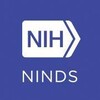
Measuring Health Related Quality of Life in Veterans With Stroke
StrokeQuality of Life1 moreApproximately 11,000 veterans annually are hospitalized with a newly acquired incident stroke. Based on American Heart Association ratios of stroke incidence and prevalence, up to 80,000 veterans may be stroke survivors. The assessment of outcomes in stroke survivors is important for clinical practice and research, yet there is no consensus on the best measures of stroke outcome in either clinical practice or research. We have developed a new stroke-specific outcome measure, the Stroke Impact Scale (SIS), to capture physical function and other dimensions of health-related quality of life.

Brain Electrical Stimulation to Enhance Recovery After Stroke
StrokeThis study will examine whether brain stimulation using transcranial direct current stimulation (tDCS) in stroke patients undergoing rehabilitation therapy can help patients recover strength and motor function more than rehabilitation therapy alone. For tDCS, two small metal disks (electrodes) attached to wires are placed on small cotton pads and taped to the subject's head, one on the forehead above the eye and the other on the top of the head. The electrodes deliver a brief electrical current that stimulates the cortex, the part of the brain responsible for motor function. Adult patients who have weakness on one side of their body as a result of a stroke occurred within the last 15 days may be eligible for this study. NIH is not directly recruiting patients for this study. Patients will be selected through the National Rehabilitation Hospital (NRH) Research Center personnel in Washington, DC, from patients under treatment at that facilitiy. Candidates are screened with a physical and neurologic examination, a review of tests done on admission to NRH, and a magnetic resonance imaging (MRI) scan, if one has not been done since the stroke. MRI uses a strong magnetic field and radio waves to obtain images of the brain. The MRI scanner is a metal cylinder surrounded by a strong magnetic field. During the MRI, the patient lies on a table that can slide in and out of the cylinder. Scanning time for this study takes about 30 to 45 minutes. Participants are randomly assigned to receive tDCS or placebo stimulation, along with rehabilitation therapy, for 2 to 3 weeks, depending on the patient's length of stay at the NRH. For the placebo stimulation, electrodes are placed on the patient's scalp as with tDCS, but no current is delivered. Before and after each rehabilitation session with electrodes, patients undergo Jebsen Taylor motor testing, in which they are asked to lift small objects, turn cards, use a spoon, stack checkers, and lift cans as fast as they can. On the day of discharge, patients have physical and neurological examinations and the motor function tests described below. The motor tests are repeated, along with standard care and a review of their health status, during outpatient follow-up visits scheduled at 3, and 12 months. The motor tests are: Wolf motor function test - Patients are asked to raise a forearm on a table, on a box, to reach across a table, push a sandbag, place a hand on the table, pull a weight, lift a can, pick up a pencil, pick up a paper clip, stack checkers, flip cards, use a key, fold a towel, and pick up a basket. Barthel index - Patients are timed for the speed with which they perform certain tasks, such as feeding, grooming, or moving a wheelchair. Abilhand questionnaire - Patients answer questions about how they perform routine daily activities. GOT test of tactile discrimination - Patients describe objects they feel with their hand. Ashworth spasticity scale - A medical staff person moves the patient's arm back and forth to see how stiff it is.

Women's Estrogen for Stroke Trial (WEST)
StrokeTo determine if estrogen hormone replacement therapy reduces the risk of stroke or death in postmenopausal women who have already had stroke or a transient ischemic attack (TIA).

Cerebrovascular Involvement in Sickle Cell Disease - Comprehensive Sickle Cell Center
AnemiaSickle Cell2 moreTo continue studies on the two major neurological complications of sickle cell disease (SCD): namely, stroke and chronic encephalopathy.

Low Cholesterol and Mortality in Blacks and Women
Cardiovascular DiseasesCerebrovascular Accident2 moreTo determine and compare the long term (thirty year) relationship of total cholesterol and mortality in Blacks and whites in a predominantly urban Charleston, South Carolina cohort and a predominantly rural Evans County, Georgia cohort with special emphasis on the investigation of the association of low cholesterol to all cause, cardiovascular disease (CVD), and non-CVD mortality.

The ARIC MRI Study
Cardiovascular DiseasesCerebrovascular Disorders1 moreTo perform a follow-up study of cerebrovascular disease in the Atherosclerosis Risk in Communities (ARIC) magnetic resonance imaging subcohort.

Vasodilation in Patients With Fabry's Disease
Cerebrovascular AccidentFabry Disease1 moreFabry's disease a genetic disorder (X-linked recessive) due to the absence of the enzyme alpha-galactosidase A. The disease is characterized by abnormal collections of glycolipids in cells (histiocytes) within blood vessel walls, tumors on the thighs, buttocks, and genitalia, decreased sweating, tingling sensations in the extremities, and cataracts. Patients with Fabry 's disease die from complications of the kidney, heart, or brain. The objective of this study is to test the belief that patients with Fabry's disease have a problem with blood vessels becoming larger. The walls of blood vessels contain muscles that when they relax the vessel becomes larger. This process is referred to as vasodilation. It is controlled by a substance released by cells in blood vessels called EDRF (endothelium-derived relaxing factor). Several drugs can affect vasodilation. Researchers believe some drugs may work by blocking the affect of EDRF. Researchers would like to test the effects of these drugs on the blood vessels of normal volunteers and patients with Fabry's disease.

Evaluation of Treated and Untreated Stroke
Cerebrovascular AccidentInfarction1 moreThis project will investigate the evolution of treated and untreated stroke in patients recruited from the collaborative brain stroke program between NINDS, CC, and Suburban Hospital. The study will use anatomical and functional imaging techniques with emphasis on the acute and subacute stage (less than one month) of the disease. As the availability of new therapeutic options for the management of acute brain stroke increases, the need to define the evolution of the disease becomes paramount, particularly as therapeutic windows, defined by known and perhaps yet undiscovered parameters, may exist. Defining these parameters will be based on state-of-the-art imaging technology with the potential of clarifying the division between ischemia (reversible damage) and infarction (irreversible). Measures of lesion size and distribution along with vascular morphology, diffusion, perfusion, flow-related, and metabolic measures will be obtained over time. We foresee these measurements will significantly develop our understanding of cerebral ischemia and introduce diagnostic and quantitative tools to guide therapy and measure its efficacy.

Study of Abnormal Blood Clotting in Children With Stroke
AbnormalitiesBlood Coagulation Disorder3 moreEffective treatment and prevention strategies for childhood stroke and porencephaly can only be developed once the causes are understood. There is increasing evidence that inherited and acquired coagulation abnormalities alone or in combination with environmental factors, predispose to arterial and venous thrombosis. Inherited abnormalities of factor V Leiden, prothrombin, protein C, protein S, and antithrombin III may account for many of these thromboses. At present there is little information on the existing distribution of these coagulation anomalies in children with thrombosis. Recent reports also suggest that these clotting abnormalities may be responsible for some instances of intracranial hemorrhage, porencephaly, cerebral palsy and fetal death. This study will measure the frequency of several coagulation factor abnormalities (factor V Leiden, prothrombin 20210A, protein C, protein S, antithrombin III, and antiphospholipid antibodies) in children with a history of porencephaly and stroke, and will compare these to the prevalence of these mutations in population controls and family members. We will also describe the exogenous conditions which in concert with these coagulation factors, may have led to the development of thrombosis in these children....

Multinational Monitoring of Trends and Determinants in Cardiovascular Disease (MONICA)
AtherosclerosisCardiovascular Diseases3 moreTo foster collaboration between the World Health Organization MONICA Project and the NHLBI Study of Atherosclerosis Risk in Communities (ARIC). To ensure that valid comparisons could made between findings in MONICA and ARIC by supporting activities to standardize coding, classification, and analysis of coronary and stroke events, risk factors, and medical care according to MONICA protocol.
